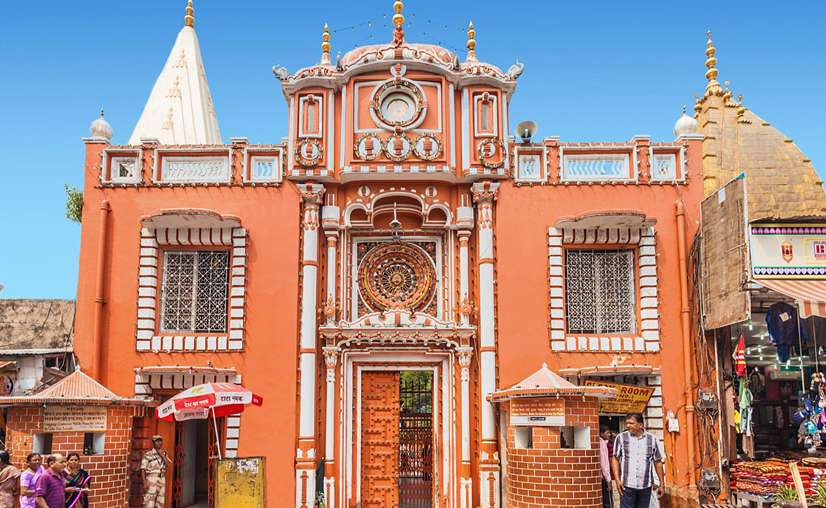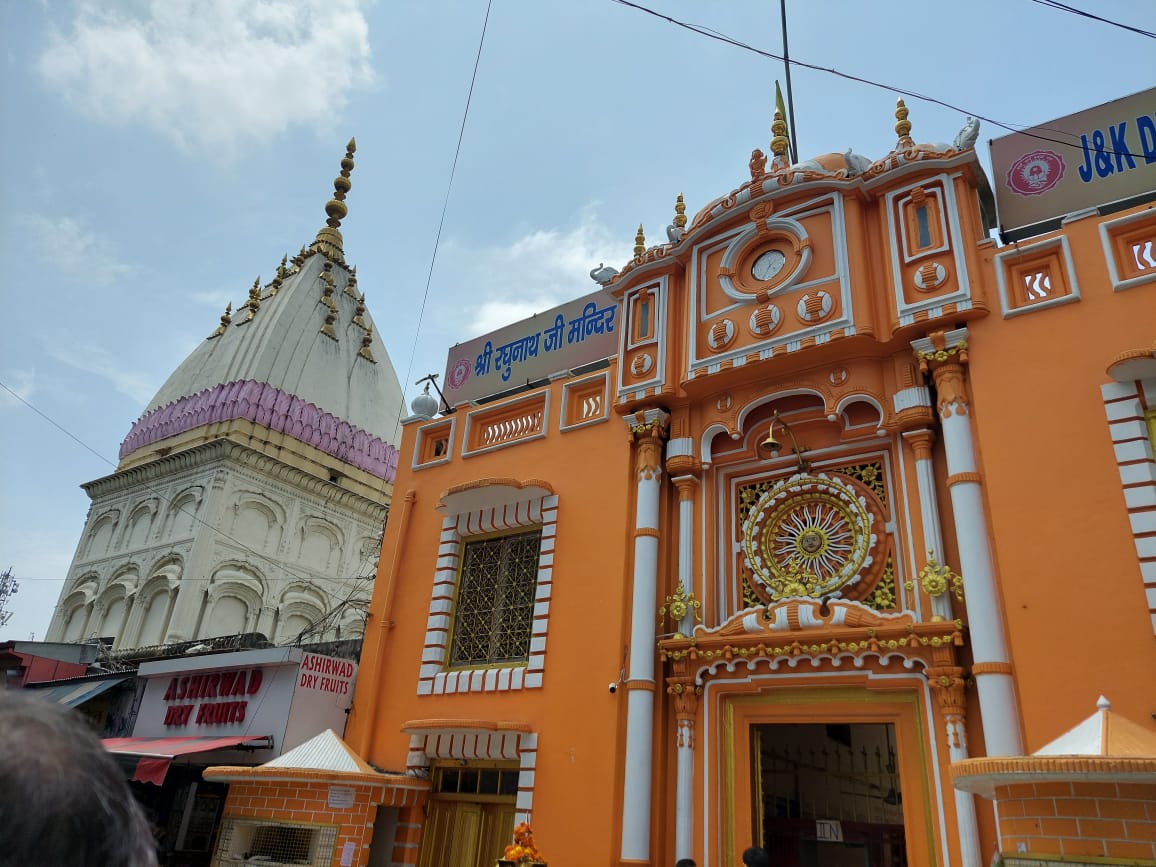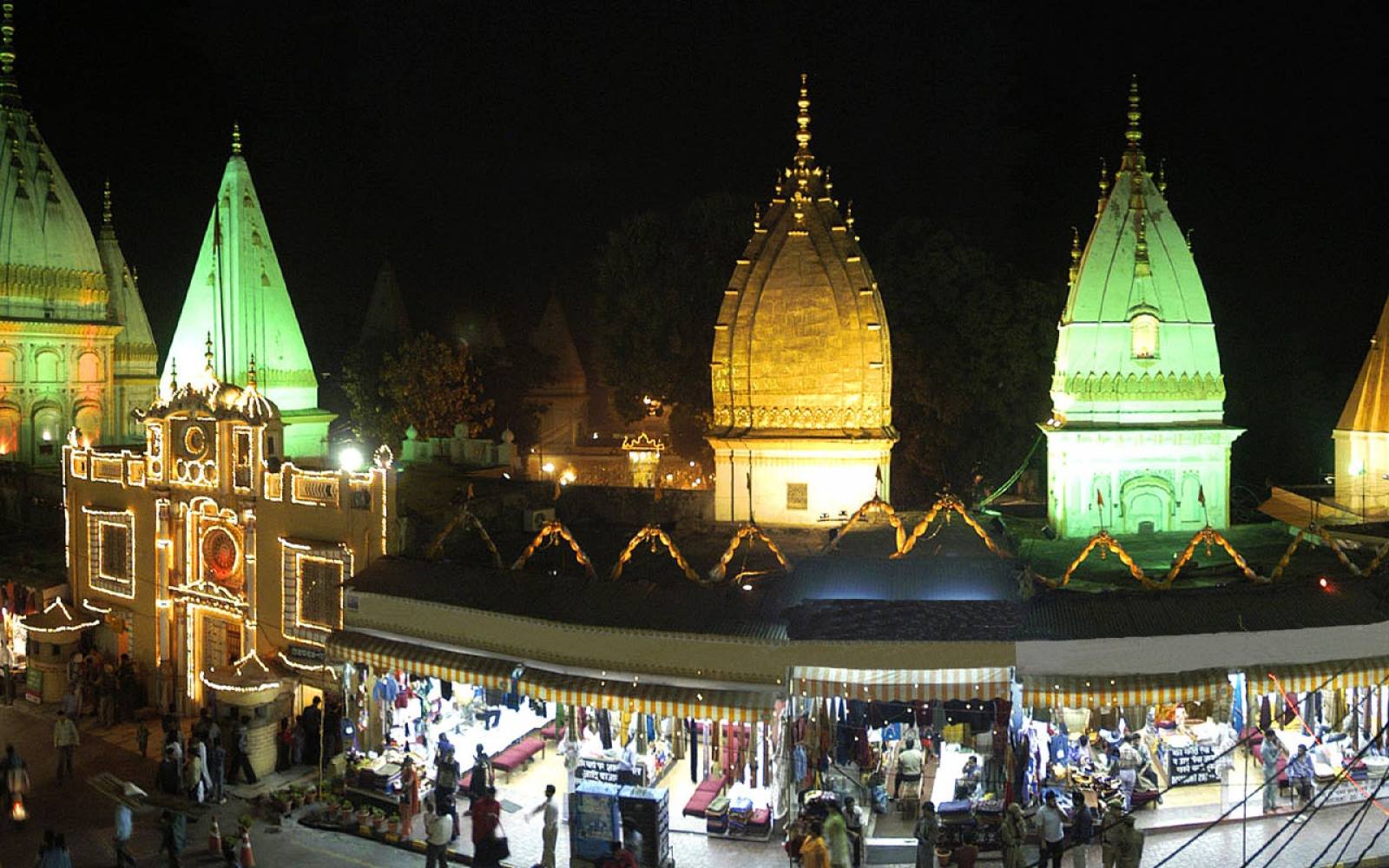


Raghunath Temple, Jammu
Raghunath Temple is
a famous
temple in the
city of Jammu . The temple complex is located
in the old part of the Jammu city, north of River Tawi.
During the
reign of the rulers of Jammu Shivaliks, after 1765, there was a spurt in
temple building activity in Jammu area, which continued during the early period
of the 19th century. The rulers built spiral shaped temples with brick and
crowned each tower with bright Kalashas in
the shape of shikhara (rising tower).
The
construction of the Raghunath Temple was initiated by the first Dogra
ruler Maharaja
Gulab Singh in
the year 1835 and later his son Maharaja
Ranbir Singh got
it completed in the year 1860. The temple complex consists of seven Hindu shrines but the presiding deity is Rama – also known as Raghunath, an Avatar of Vishnu. The entrance has a Surya icon,
another manifestation of Vishnu. It is built over a raised platform of 5 feet
(1.5 m) height in an octagonal shape. The front fascia is 40 feet
(12 m) in width while the main shrine is set 50 feet (15 m) away from
the entrance.
The front
fascia of the temple has three entry doors The main shrine which is 20
feet (6.1 m) x 20 feet (6.1 m) in size, is surrounded by a
circumambulatory passage (pradakshina path) of 10
feet (3.0 m) width. The entrance door, set on one side of this
octagonal chamber of the shrine, faces east. The interior of the inner
chamber is gold plated. The main walls of the outer chamber have 15
panels, each of 9 feet (2.7 m) height. These interior panels have a
surfeit of paintings of the Jammu School of painting consisting of images from
the Hindu epics Ramayana, Mahabharata, and Bhagavad Gita,
represented by gods such as Ganesha, Krishna, reclining Vishnu and also a large painting depicting
the Sita Swayamvara
Apart from the mythology related themes, some paintings relate to great men,
like Kabir, a saint, and army personnel of Dogra and Sikh communities.
The paintings also reveal the type of attire and the weaponry prevalent during
the period of temple building.
In the main
shrine, the idol of Lord Rama resides, who is the family deity of the then king
and the Dogra people. The shrine has a dome instead of the normal shikhara in a
pyramidal shape, which is in the Sikh architectural style. All the seven
shrines have gold plated spires.
Gods and Goddesses enshrined in the seven shrines are all related to the epic
Ramayana. The temple is also enshrined with a very large number of Saligrams
which are, specially
obtained from the Gandaki river, in Nepal.
A distinct feature
noted in the entire temple complex is the stucco style embellishments built with brick masonry
and finished with plaster. The motifs crafted are of floral and geometric
designs, on the walls, in the niches and on arches. Apart from paintings
on the walls, the niches in the interior parts of the shrines have 300 well
crafted images of deities. The profusion of paintings and images on the
internal and external faces of the temple was considered an auspicious feature,
instead of leaving the wall surfaces blank. However, the images and murals on
the outer walls of the temple have since been demolished.
All the
spiral-shaped towers have gold plated spires. The niches in the walls of the
shrines are decorated with 300 well-crafted icons of gods and goddesses
including those of Surya and Shiva, but most are particularly related to the life stories of
Rama and Krishna. The paintings in the 15 panels of
the main shrine are based on themes from Ramayana, Mahabharata, and Bhagavad Gita. During the reign of Maharaja Ranbir
Singh, the temple complex started a pathshala (school) which
welcomed students from all castes and classes. The temple premises include a
school and a library that preserves over 6,000 manuscripts in many Indian
languages, with a
notable collection of Sarada script and Sanskrit manuscripts.
These are
mostly copies made from manuscripts not available for sale, in Devanagari from
Sarada originals, by scribes employed by the library in the nineteenth
century. The library added to its collection, in the 19th century, a dozen
rare Sanskrit books in the Sarada
script as an object of curiosity. The collection as
indexed by Stein, included Sanskrit manuscripts (predominantly Devanagari) of
Vedic literature, grammar, lexicography, prosody, music, rhetoric, Kavya,
drama, fables, dharmasutras, Mimamsa, Vedanta, Samkhya, Yoga, Nyaya, Jyotisha,
Architecture, Medicine, Epics, Puranas, Bhakti and Tantra.
Maharaja Ranbir
Singh funded a translation centre and initiated an effort to translate texts
in Arabic and Persian languages . According to Zutshi, this
inter-religious initiative was praised by his contemporaries.
The Raghunath
temple remains a significant scholarly source of Sarada script manuscripts and
one of the largest collections of Hindu and Buddhist texts of the Kashmir
tradition. The Raghunath temple has been an early promoter of digitization
initiative of the manuscripts it houses, and has started the eGangotri initiative
to digitize ancient manuscripts from other parts of India.
Within
the enclosed space of the yard there are residential buildings and open cattle
yards on its eastern and northern directions.









